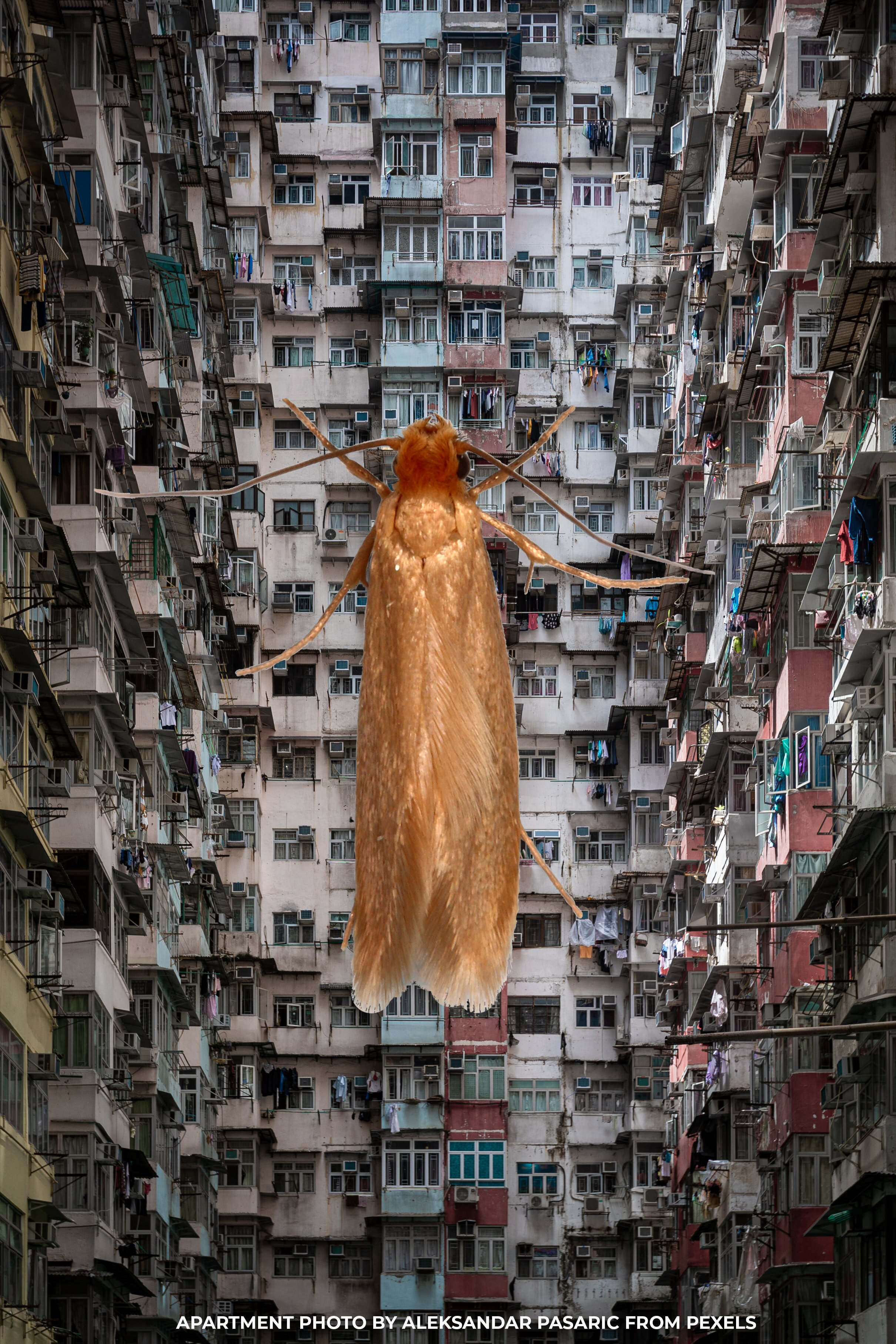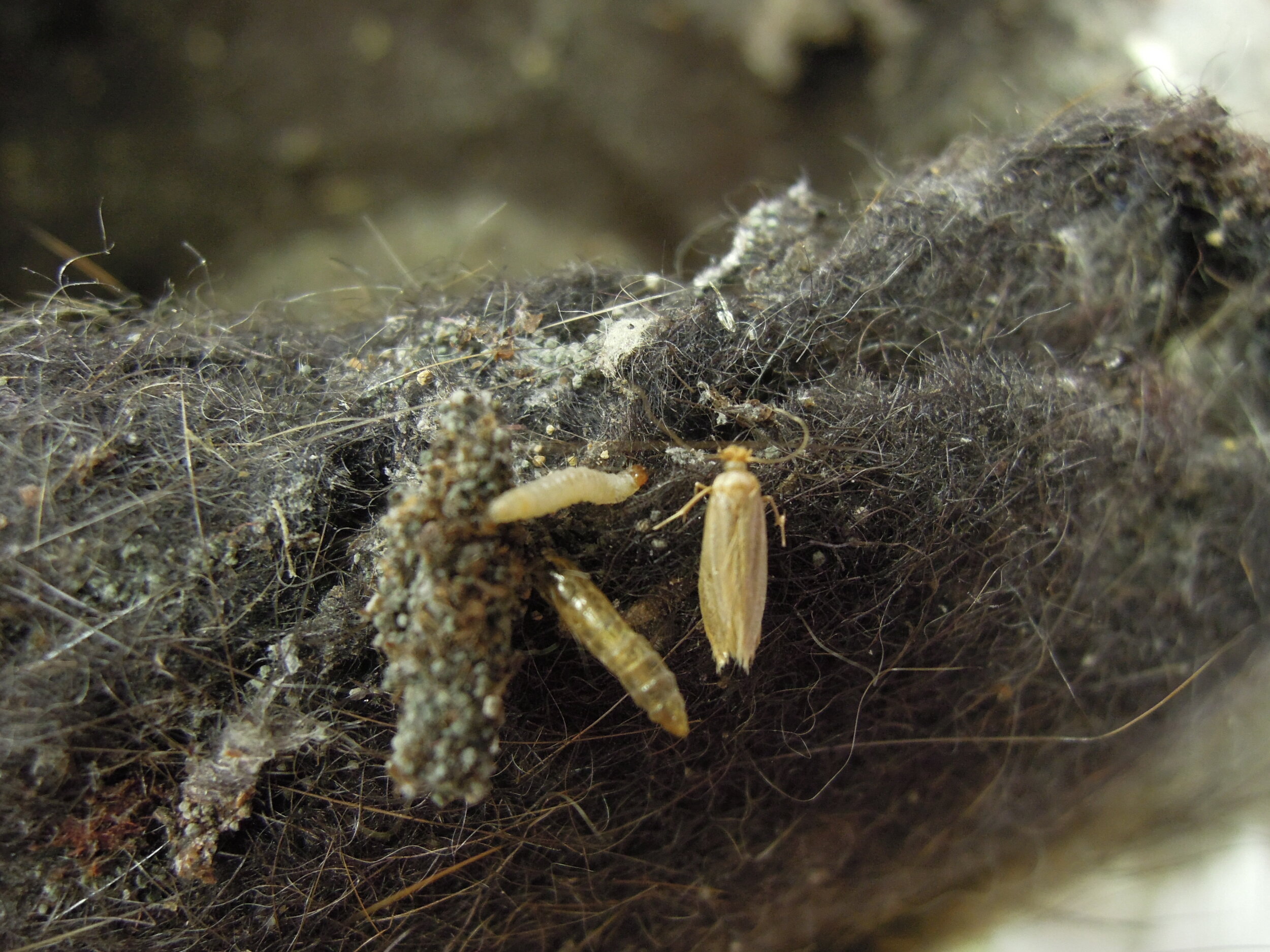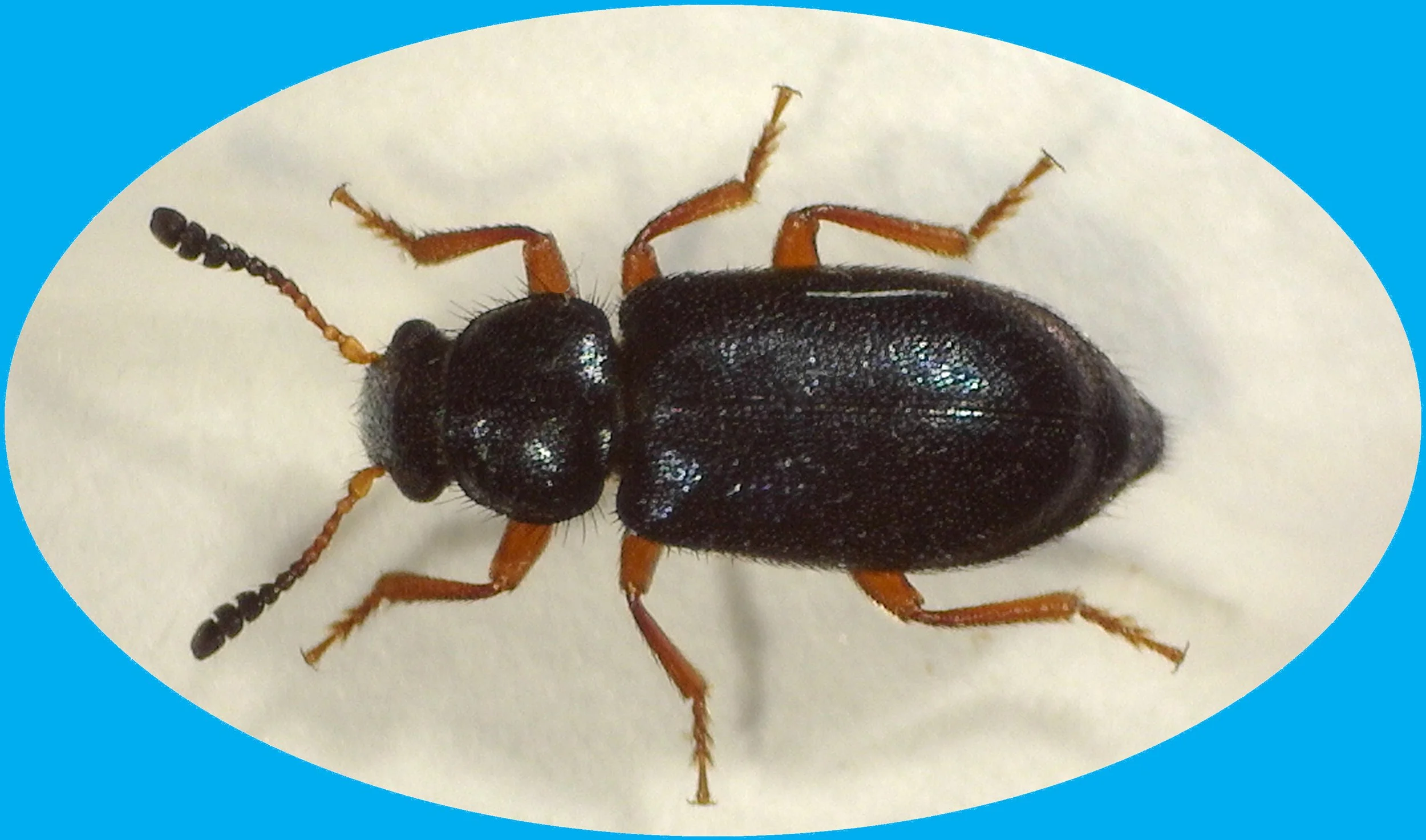Clothes Moths Threaten Apartment Complexes
Pat Kelley, BCE - President of Insects Limited
What do clothes moths have to do with apartment complexes?
Insects Limited annually ranks US cities with the most clothes moth issues. The takeaway each year is that there are many more problems with clothes moths in highly-populated urban areas compared to issues in rural settings.
This is almost certainly due to the fact that people pass the clothes moths from person to person as they gift, sell or trade their belongings with each other. We also know that the clothes moths can travel from residence to residence more easily in densely populated cities. Large apartment complexes are the most “at-risk” dwellings within cities to contract clothes moth issues.
What is the cause of clothes moth infestations?
Think about it for a moment. A single resident who ignores a large clothes moth population in their own apartment can be the cause for infestations in the apartments above, below and on each side of them.
This constant pest pressure in the complex can go on for years and years if the clothes moth-infested resident does nothing to rid themselves of their infestation or if the administrative arm of the apartment complex does not force clothes moth remediation for that resident. Apartment dwellers need to be able to recognize clothes moth issues in their own residence and also be aware of the potential risks that their neighbors may pose.
When people are living in close proximity to each other, in the same building complex, clothes moths can fly or even crawl from one living unit into the next. Depending on the building design, the moths may be able to simply follow pipe chases or ventilation duct-work from one unit into the next. They can also fly into open windows from a rooftop or crawl through cracks around a baseboard after feeding on bird feathers on the roof or on a dead rodent in a wall void.
When should apartment complex residents be concerned about clothes moth infestations?
On a global scale, clothes moths cause damages of hundreds of millions of dollars each year. Even more alarming is that they rob us of our family history and cultural heritage. When clothes moth feed on all of these things that have special meaning to us, in most circumstances, these priceless things are unrepairable.
As an apartment resident, you may have gone decades without experiencing any issues with clothes moths. Unfortunately, this absence of having problems with clothes moths in the past does not exempt you from having excessive problems in the immediate future. We know that cloth moth populations are on the rise across the US and in many countries.
Your chances of experiencing this pest in your own home is higher now than it ever has been. Clothes moths are three-dimensional pests that can easily move up, down or horizontally from one living unit into another. Prevention is the ultimate means of keeping your home moth-free.
Webbing clothes moth damage to a wool hat
Clothes Moth Challenges
Several challenging factors that can arise when confronting clothes moth populations in an apartment complex.
1. Neighbors who ignore their own clothes moth problems: The biggest challenge may be the constant moth pressure that originates from those living adjacent to you. It is quite possible that you are doing everything correctly to prevent or eliminate clothes moth issues, but neighbors on either side or living above or below you are not taking these same measures.
If this is the case, their living spaces become breeding grounds for the clothes moths and the moths from their spaces continually find their way into your living space through small HVAC, electrical or plumbing passageways that run throughout the apartment complex. This constant pest pressure almost certainly opens the door for moth damage on your belongings and as a source for mental stress as well.
This type of challenge is only eliminated through a coordinated and well-planned pest management program throughout the entire complex. A plan where all residents and management buy into the plan and are strongly encouraged to do their part to carry it out.
2. Hidden Clothes Moth Infestations: Another challenge in eliminating clothes moth populations in a high-rise setting is hidden food sources that the clothes moths are emerging from and finding their way into living spaces. The best way to eliminate clothes moths is to eliminate their food sources. In a high-rise, there are miles and miles of ventilation ducts, and electrical and plumbing pipe chases.
There are also construction voids designed into the master plan. If a dead rodent or bird takes its last breath in a wall void, a void beneath cabinets, or within a ceiling/floor void, they can become a source of clothes moths for months without the resident even knowing these food sources exist. Most often, hidden infestations are found through studying the capture rates on pheromone traps and pinpointing where the clothes moths are entering your living space from.
Once you know that they are coming in from behind a certain piece of decorative trim or at a construction joint, one can begin the search of the voids in those areas. Sometimes, the only way to address hidden infestations is to run small cameras into these voids to inspect for possible problems. Localized treatment or carcass removal can be performed based on the location and accessibility.
3. Copious amounts of clothes moth food sources in your living space: As you look through the “Checklist of at-risk items” below you may realize that you have spent a lifetime collecting the perfect food for clothes moths.
As an example, the majority of people will choose to purchase wool slippers over synthetic slippers, or a wool rug over a synthetic rug because, even if these items are more expensive, they seem nicer. You may have also received many items on that list that have been passed down from one generation to the next. When you stop and look at all of the things that you have acquired, the list of potential moth-food items can be tremendously long.
The thought of looking through every room, closet and drawer for potential at-risk items can be overwhelming. There is no easy solution to this dilemma except for the systematic inspection of each of these locations. Potential moth-food items should be bagged and discarded if they are no longer wanted or needed. Clothing items that are to be kept should be kept in vacuum-sealed bags or moth-resistant garment bags for safe storage. Other items can be stored and protected in zip-lock plastic bags.
Once you embrace the challenge of going through your belongings in this systematic way, I believe that you will find that the task goes quicker than originally thought.
Pheromone Traps for Clothes Moths
Checklist of at-risk items for clothes moths
Wool rugs or wool carpet padding
Wool attire (sweaters, jackets, pants, hats, stockings, slippers, etc.)
Wool blankets
Wool wall hangings (macramé, tapestry, Native American art, etc.)
Taxidermy
Upholstered furniture containing wool, feathers or horsehair
Feather or down comforters, pillows, jackets or mattresses
Feathers incorporated into artwork (Native American art, contemporary art, children’s art, etc.)
Fur coats, hats or boots
19th Century human hair art or jewelry
Pinned insect collections
Any accumulation of dead insects
A dead rodent or dead bird in a wall void, basement space or ceiling void
Felt made from animal fibers on hats or part of artwork
Felt or wool pads beneath the legs of furniture or on the base of decorative candlesticks or antiques that sit on table tops
Piano hammer felt (interior working parts of a piano)
Books that are felt-lined or contain other natural fibers
Accumulations of pet or human hair in ductwork, hard-to-reach areas or beneath wooden floors
Animal hide rugs or pelts (Bear rugs, etc.)
What can I do to prevent clothes moths in my apartment?
As a resident of an apartment complex, there are several things that you can do to reduce the risk of clothes moth invasion and prevent damage to your belongings.
Exclusion
Blocking clothes moths from being able to easily enter an apartment is a wonderful way to prevent an infestation. First look at points of entry into your living space and analyze if moth could easily enter. Remember that they only need a few millimeters of space to get in.
To prevent clothes moths from actively flying into an open window, insect screening should be secure and in place. Door sweeps can be put onto the bottom of the doors leading in from hallways or common areas. Check for gaps around baseboards or heating/plumbing pipes that could allow clothes moths in wall voids to enter.
Storing non-infested wool or fur garments in specialized moth-resistant garment bags or in well-sealed sweater boxes is also a means of exclusion. New, scientifically tested, moth-resistant garment bags have just come to the market. Finally, look at your heating or air conditioning return air vents to make sure that these do not open into large open voids that freely connect to other living units.
Sanitation
Sanitation includes anything and everything that takes away food sources for the moth larvae. This includes cleaning and/or removing unused or seldom-used clothing that contain animal fibers. Removing or cleaning all other clothes moth food sources (see: “Checklist of at-risk items” above) from residential or storage areas.
Detailed vacuuming of living and storage spaces to remove pet hair, human hair, skin debris and dead insects that can become a food source for clothes moths. Note: Vacuum cleaner bags containing hair and dander should be replaced every 2 months to prevent the contents from becoming a food source of the clothes moths.
Large wool rugs can be professionally cleaned, smaller rugs can be taken outdoors and “beaten” until no further dust emerges. Areas beneath furniture and beds should be thoroughly cleaned of dust and debris. In particular, pay attention to the area where the furniture legs come in contact with a wool rug or wool carpeting.
Monitoring
Sticky traps baited with the sex pheromone of clothes moths is the single best way to monitor for the presence of these moths. Make sure that the pheromone lure quality is high and coming from a reputable company like Insects Limited. Find clothes moth traps here. Visual monitoring in front of television or computer screens during the evening hours can indicate the presence of moths in a residence. Pheromone traps will help you locate the specific area of a moth infestation.
A visual inspection of individual articles of clothing, rugs or furniture is needed to pinpoint the source. Once a source of the infestation is found, it should be sealed into a plastic bag (area rugs should be rolled up and covered sealed with polyethylene sheeting) and removed to prevent the further spread of the pest.
Treatments
The key to eliminating clothes moth infestations is to interrupt the clothes moth life cycle. The damaging larval stage cannot be caught in moth traps but can be eliminated via other means. The following list represents the current best practices of a moth removal program.
“Freez’em or Fry’em” are easy and effective methods of killing clothes moths.
Heat
Clothes moth larvae and eggs can be quickly killed with high heat. Tumble dryers set on high will kill all life stages in 60 mins. Placing garments on hangers in a closed car on a hot, sunny day will eradicate the immature stages. Hanging garments in black plastic bags and hanging in direct sunlight on a hot day can achieve the same results.
Smaller items like woolen socks, mittens, scarves, hats and sweaters can be placed in a tumble dryer (without washing) and exposed to the heat on a high setting for 30 minutes.
Larger items like rugs can be placed over the porch banisters and exposed to the direct sun for a couple of house then turned over so that all sides get exposed. Beating these rugs will also help dislodge eggs and larvae from the base of the fibers.
Cold
Clothes moth larvae and eggs can also be killed with a long exposure to freezing temperatures. Items to be frozen should be wrapped in plastic, frozen in a chest freezer at -18 degrees Celcius for 3 days. Insects Limited offers a Freezer Treatment Bag Kit to help with your efforts. Garments can be cleaned following freezing.
Cold Storage
A good solution for Spring to Fall storage of furs is to use a cold storage service at a professional furrier or fur store.
Dry Cleaning
Expensive woolen jackets, uniforms, dresses, slacks and garments with ‘dry clean only’ labels should be taken to the dry cleaner.
Steam Cleaning
Upholstered furniture and carpets can be cleaned using a steam cleaner. Hot steam will kill eggs and larvae that are close to the surface of the furniture or floor coverings on contact. Note: Steam will not penetrate through thick, > ½ inch wool rugs/carpeting/padding. Eggs and larvae on the underside of these floor coverings may survive if that area is not also treated.
Professional Cleaning
Large rugs should be taken out and cleaned by a professional service. They can put these rugs into large pools with cleaners, have them washed, dried and repaired if damaged.
Damaged or dirty furs should be cleaned by a furrier or fur store with this service. They have the proper cleaning agents and drying equipment to remove perspiration and other spills on the hair and fabric.
Brushing
Some garments or rugs may show signs of damage (webbing or granular debris). This may be simply removed with a fine brush. This is an important step after freezing or heating garments to remove debris. If the garment is damaged in the future, new damage will be evident compared to old damage.
Vacuuming
Regular vacuuming of the carpets and rugs including under furniture can help remove clothes moth eggs and larvae over time. This keeps the population from accumulating and reduces the chances of damage. A crack and crevice tool to clean out the gaps around the edges of the rooms is extremely effective.
Insects Limited, an Insect Pheromone Company
Insects Limited, Inc. researches, tests, develops, manufactures and distributes pheromones and trapping systems for insects in a global marketplace. The highly qualified staff also can assist with consultation, areas of expert witness, training presentations and grant writing.
Insects Limited, Inc. specializes in a unique niche of pest control that provides mainstream products and services to protect stored food, grain, museum collections, tobacco, timber and fiber worldwide. Please take some time to view these products and services in our web store.













